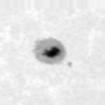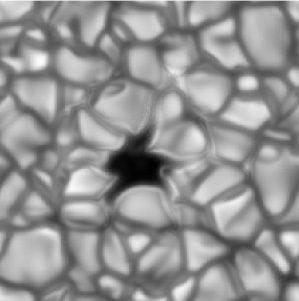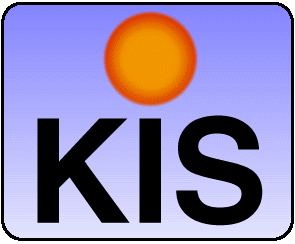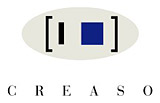Download Proceedings
"Helioseismology of sunspots: a case study of NOAA region 9787", Space Science Reviews, in press 2009, [doi:10.1007/s11214-008-9466-5], L. Gizon, H. Schunker, C.S. Baldner, S. Basu, A.C. Birch, R.S. Bogart, D.C. Braun, R. Cameron, T.L. Duvall, Jr, S.M. Hanasoge, J. Jackiewicz, M. Roth, T. Stahn, M.J. Thompson, S. Zharkov.This is a joint publication resulting from the second HELAS workshop held at the Kiepenheuer-Institut fuer Sonnenphysik in Freiburg, Germany from January 7 to 11 2008 and the International Space Science Institute meeting on The origin and dynamics of solar magnetism that was held in Bern, Switzerland from January 21 to 25 2008.
Team 1 Summary

During the workshop members of Team 1 actively analyzed the sunspot in Active Region 9787 using MDI/SOHO observations made available on the HELAS internet platform. Three main methods of helioseismology -- time-distance, ring-diagram and helioseismic holography -- were involved. This made it possible to directly compare the results for an identical data set by eliminating any possible differences in initial data reduction. This had not been done before for a sunspot. Informal discussions of the emerging results and the methods used continued throughout the meeting.
The results were presented at the end of the week, and are summarised below in the proceedings. Each author submitted key figures demonstrating their findings and short descriptions of their analysis and interpretations of their results. Efforts focused on inferring the subsurface structure of the sunspot (wave-speed perturbations) and subsurface flows. An important result is that the answers depend heavily on the details of the data analyses and, in particular, on the Fourier filtering of the MDI observations. In addition the absorption coefficients, the acoustic power, cross-spectra phase and some forward modeling were also carried out.
Team 2 Summary

Team 2 discussed various strategies and issues related to the numerical treatment of wave propagation in the near surface layers of the Sun. Particular emphasis was placed on two topics: the need for a set of standard tests which numerical codes should reproduce as a form of code validation; and on the various ways of constructing background solar models containing inhomogeneities. Other topics which were discussed included waves in magnetoconvection simulations and the interprettation of acoustic halos around sunspots. On the issue of code testing, it was decided that a the creation of tests for various aspects of the simulations could be accomplished. These tests include: a comparison against WKB approximation results (E. Khomenko), a comparison against the complex eigenfrequencies of mode propagation through a uniform inclined field in a stratified atmosphere (A. Crouch), and against various analytic solutions (S. Hanasoge). These tests are intended to verify the behaviour of most aspects of the code (eg propagation speeds, mode coupling, interaction with inhomogeneities). A phone conference was planned for March. On the topic of background atmospheres, the most significant result was that several codes and different models were made available to the group members for the purpose of sharing knowledge. After some testing these models may be made available to the general community.
Team 3 Summary

Team 3 made significant progress towards being prepared for the launch of the Solar Dynamics Observatory (SDO) early in 2009, and its anticipated 1.5 TB per day of high-resolution and high-cadence data. The team focused on implementing and discussing the Data Record Management System (DRMS), which is the software that will be responsible for managing SDO data. The DRMS is being developed and distributed by the Joint Science Operations Centre (JSOC) at Stanford University in the USA, and is also fully operational at the German Data Centre (GDC) for SDO, which is hosted by the Max Planck Institute for Solar System Research, Germany.
In order to implement the DRMS and demonstrate its functionality, several real data sets were ingested, at both JSOC and GDC-SDO. This can be separated into three important steps: first define the data series which involves choosing which keywords are to be stored in the database, then a module must be written in C that reads in data and ingests keywords into the database and the real physical data onto disk, then all data is made available to users through dynamic web pages. We created, ingested and made available the following data: tracked GONG data cubes, the results from this workshop, solar summaries from the National Oceanic Atmospheric Administration, and we discussed how to handle results from distributed computing calculations. There were also many important discussions and other research conducted throughout the workshop. A list of other large solar software and databases was collated and discussed to get a better perspective of how the DRMS compares, which included eSDO, Astrogrid, Solarsoft, the Virtual Observatory, the Virtual Solar Observatory and some of these have design goals to integrate directly with the DRMS. We also elucidated important differences in database philosophy between the DRMS and its underlying database software, PostgreSQL. Another important discussion was, how do we export SDO data from JSOC to other institutions world wide such as the GDC-SDO? Thus, we worked on a relatively new concept, netDRMS, which is the notion of automatically reading data from one DRMS, transferring this data over the internet and ingesting it into a remote DRMS.

